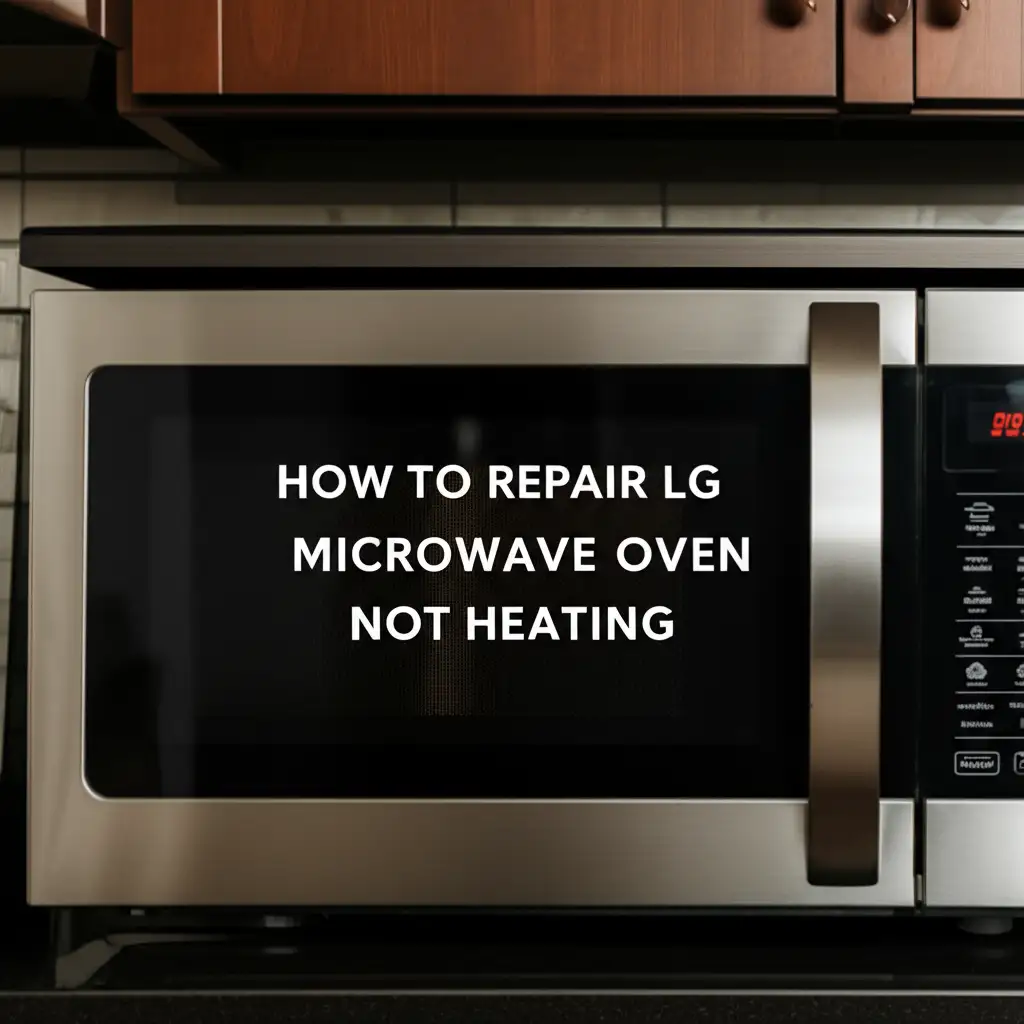· Katria Melrose · Home Appliances · 17 min read
How To Get French Door Refrigerator Through Door

Getting Your French Door Refrigerator Through a Door
Moving a large appliance like a French door refrigerator can feel overwhelming. These modern fridges are often wider and deeper than older models. Fitting them through standard doorways presents a common challenge for many homeowners. But don’t worry, I am here to help you.
You can successfully move your French door refrigerator through even tight spaces. This guide shares smart steps to make the process easier and safer. We will cover precise measuring, thorough preparation, and specific door removal techniques. You will learn how to get your French door refrigerator through any door safely. This article gives you the confidence to tackle this moving task.
Takeaway
- Measure all refrigerator and doorway dimensions accurately.
- Remove refrigerator doors, hinges, and possibly drawers for extra clearance.
- Prepare the appliance by emptying, cleaning, and securing all parts.
- Use appropriate moving equipment like an appliance dolly and straps.
- Protect your floors and the refrigerator during transport.
To get a French door refrigerator through a door, first measure the fridge and doorway dimensions. If needed, remove its doors, hinges, and any freezer drawers for extra clearance. Tilt the appliance carefully, using a heavy-duty dolly and moving straps for safe transport.
Measure Everything Twice: The Crucial First Step
Before you even think about moving your French door refrigerator, grab a tape measure. Accurate measurements are your most valuable tool here. Guessing dimensions can lead to costly damage to your appliance or your home. A few minutes of careful measuring saves hours of frustration.
Measuring Your French Door Refrigerator
Start by measuring your refrigerator’s height, width, and depth. Measure the height from the floor to the top of the fridge. Do not forget to measure the hinge caps if they extend above the main body. Measure the width from side to side. Measure the depth from the front of the doors to the back. Include handles in your depth measurement if they are not removable.
You should also measure the depth with the doors open at 90 degrees. This helps if you need to pivot the fridge. Knowing these numbers is crucial. Write them down clearly. These measurements determine if your fridge will fit through the door opening.
Measuring Your Doorway and Pathway
Next, measure the doorway you plan to use. Measure the width of the door frame from side to side. Measure the height from the floor to the top of the door frame. Remember, the actual opening is smaller than the frame itself. Also, measure any other narrow passages, like hallways or stairwells. Do not forget to measure the ceiling height in these areas.
Check for obstacles like light fixtures, handrails, or tight corners. Remove anything that can get in the way. Plan your entire path from the refrigerator’s current spot to its new location. Make sure the path is clear of furniture or decor. Having a clear route prevents unexpected delays or damage.
Compare your refrigerator’s dimensions to the pathway dimensions. Your refrigerator’s width is the most common issue. If the fridge is wider than your doorway, you will need to remove its doors. If the fridge is taller than your doorway, tilting might be an option. These careful measurements provide the roadmap for a successful move.
Gathering Essential Tools and Prioritizing Safety
Moving a heavy appliance like a French door refrigerator requires more than just muscle. You need the right tools to do the job safely and efficiently. Proper equipment protects both you and your valuable appliance. Before you start, gather everything you need. This preparation prevents interruptions during the move.
Essential Tools for Appliance Moving
First, you will need a heavy-duty appliance dolly. Make sure it has straps to secure the refrigerator. Moving blankets are also crucial. They protect the fridge’s finish from scratches and dents. They also protect your walls and floors. A set of basic tools, like screwdrivers (Phillips and flathead) and an adjustable wrench, will be necessary. These are for removing doors and hinges.
Gloves provide a better grip and protect your hands. Eye protection is also wise, especially when working with hinges or wires. Lastly, have some painter’s tape or strong packing tape ready. This tape helps secure loose parts and doors during transport. Do not forget plastic wrap or old towels for containing water or ice if defrosting.
Prioritizing Safety Measures
Safety is paramount when moving heavy objects. Never attempt to move a large refrigerator by yourself. Always have at least one strong helper. More helpers are better for very heavy or awkward appliances. Proper lifting techniques are vital. Bend your knees, keep your back straight, and lift with your legs, not your back.
Clear your path completely before you begin. Remove rugs, pet toys, or anything else that could cause a trip. If moving over hardwood floors or tiles, lay down plywood or hardboard sheets. This protects your floors from scratches or cracks. Never drag the refrigerator directly on the floor. Use the appliance dolly for all movement. Communicate clearly with your helpers. Everyone should know the plan and their role. A well-prepared and safe approach ensures a smooth move for your French door refrigerator.
Preparing Your French Door Refrigerator for the Move
Preparing your French door refrigerator correctly before moving is vital. This step prevents damage to the appliance. It also makes the moving process much easier and cleaner. Skipping these steps can lead to unpleasant surprises later. Give your fridge the attention it needs before its journey.
Emptying and Cleaning
First, empty your refrigerator completely. Remove all food items from both the fridge and freezer compartments. It is a good idea to consume or discard perishable items a few days before the move. Store any remaining frozen items in a cooler with ice packs. This keeps them cold during the move. You can also give away items to friends or neighbors.
After emptying, clean the interior thoroughly. Use a mild soap and water solution or a specialized appliance cleaner. Wipe down all surfaces, including shelves and drawers. This prevents mold or odors from developing while the fridge is off. Pay attention to spills that might have hardened. You want your fridge to arrive at its new spot fresh and clean. If your model has a water dispenser, you might also consider cleaning it. You can learn more about this process with resources like how to clean Samsung French door refrigerator water dispenser.
Securing Loose Components
Next, remove all removable parts from the interior. This includes shelves, bins, and drawers. Wrap these items separately in moving blankets or bubble wrap. Pack them in clearly labeled boxes. This protects them from breaking during transport. It also lightens the refrigerator’s weight.
Unplug the refrigerator from the wall outlet. If your model has an ice maker or water dispenser, disconnect the water line. This usually involves turning off the water supply valve first. Then, disconnect the hose from the back of the fridge. Drain any remaining water from the dispenser line. Use towels to catch drips. Allow the freezer to defrost completely if it contains ice. This can take several hours. Some people start this process the night before.
Once the interior is ready, secure the French doors. Use strong packing tape or appliance straps to hold them closed. Tape prevents the doors from swinging open during transit. Secure the power cord as well. Coil it neatly and tape it to the back of the refrigerator. These simple steps make a big difference in preventing damage.
Removing French Door Refrigerator Doors for Easier Passage
For many French door refrigerators, removing the doors is not just an option. It is a necessity. These appliances are often wider than standard doorways. Taking the doors off significantly reduces the overall width. This step provides the extra clearance you need for a smooth move. Do not be intimidated by this process; it is a common task.
Gathering Necessary Tools for Door Removal
Before you start, make sure you have the right tools. You will likely need a Phillips head screwdriver. A flathead screwdriver might also be useful. An adjustable wrench or a socket set can help with nuts on hinges. Have a small container ready to hold screws and other small parts. Label this container clearly. This helps you keep track of all pieces for reassembly.
You will also want some towels or rags. These catch any drips if your fridge has a water dispenser in the door. A second person is highly recommended for this task. They can help support the doors as you remove them. This prevents the doors from falling and getting damaged. They also prevent injury to yourself.
Step-by-Step Door Removal
The exact steps vary slightly by brand and model. Always consult your refrigerator’s owner’s manual first. The manual provides specific instructions for your appliance. However, the general process is similar across most French door models.
- Disconnect Power and Water: Ensure the refrigerator is unplugged. Turn off the water supply valve to the fridge. Disconnect the water line from the back of the fridge.
- Access Top Hinges: Locate the top hinges on each French door. They are usually covered by a plastic hinge cover. Remove any screws holding the cover in place. Carefully lift the cover off.
- Disconnect Wires (if applicable): Many French doors have electrical wires running through the hinges. These wires power features like the ice maker or water dispenser. Gently disconnect these wire harnesses. Pay attention to how they are connected. Take a photo with your phone if it helps remember the configuration.
- Remove Top Hinges: Unscrew the bolts or screws holding the top hinges in place. Support the door firmly as you remove the last fastener. The door will become heavy quickly.
- Lift Off Doors: Once the top hinge is loose or removed, carefully lift each French door straight up and off its bottom hinge pin. Lay the doors flat on a moving blanket or soft surface. This protects their finish.
- Remove Bottom Hinges (Optional): If your doorway is very narrow, you might need to remove the bottom hinge pins or even the entire bottom hinge bracket. This usually involves removing a few more screws. This provides maximum clearance.
- Remove Freezer Drawer (if needed): For some very tight spaces, removing the bottom freezer drawer might also be necessary. Consult your manual for instructions on this. It typically involves unscrewing mounting brackets.
You can find more detailed guidance on door removal, including visual aids, by looking at related articles. For instance, how to remove KitchenAid side by side refrigerator door offers valuable insights into similar appliance door removal processes. Store all removed parts—hinges, screws, covers, wires—in a clearly labeled bag or container. Attach it securely to the refrigerator or keep it with the doors. This ensures you have everything for reassembly.
Strategic Moving Techniques for Tight Spaces
Moving a heavy appliance like a French door refrigerator requires more than just brute strength. It needs strategy, precision, and the right equipment. Once the doors are off and the fridge is ready, focus on the actual movement. Navigating tight spaces can be tricky, but with the right approach, it is manageable.
Using a Heavy-Duty Appliance Dolly
An appliance dolly is your best friend when moving a refrigerator. Do not attempt to slide or carry the fridge without one. Appliance dollies are designed for heavy loads and often have stair climbers or larger wheels. Position the dolly at the back or side of the refrigerator. Tilt the fridge slightly and slide the dolly underneath. Make sure the bottom edge of the refrigerator rests securely on the dolly’s base.
Once the fridge is on the dolly, use the attached straps to secure it firmly. Cinch the straps tightly around the refrigerator and the dolly. This prevents the fridge from shifting or falling during transport. Always move the dolly slowly and deliberately. Do not rush. One person should guide the dolly, while another helps to stabilize the top of the refrigerator, especially around corners. This team effort ensures control and reduces the risk of accidents.
The Importance of Proper Tilting and Pivoting
Even with the doors removed, a French door refrigerator might still be a tight fit. This is where tilting and pivoting come into play. If the fridge is too tall for a doorway, tilt it back at an angle. Make sure the back of the fridge is resting on the dolly. This reduces the effective height. However, be careful not to tilt it too far. You do not want it to become unstable.
When going through doorways or around tight corners, pivot the refrigerator. This means turning it on its own axis. Push one side forward while holding the other side back. This maneuvers the fridge slowly through the opening. Always check clearance on all sides. Use moving blankets to protect walls and door frames from scratches.
For extremely tight doorways, you might even need to briefly remove the door frame trim. This provides an extra inch or two of crucial space. This is a last resort, but it can be necessary. Always communicate with your helper. Call out clearances and obstacles. Working as a team makes these maneuvers much safer and more successful.
Reinstalling French Door Refrigerator Doors and Setup
Once your French door refrigerator is in its new location, the hard part is over. Now, you need to reattach the doors and set up the appliance. This process is essentially the reverse of removal. Taking your time here ensures everything works correctly. It prevents common post-move issues.
Reattaching Doors and Wires
Start by carefully taking the doors off their protective blankets. Make sure you have all the hinges, screws, and wire harnesses you removed earlier. Identify which door goes on which side. French doors are often specific to left or right.
First, align the bottom hinge pin on the refrigerator with the hole in the bottom of the door. Carefully lower the door onto the pin. Have your helper support the door as you do this. Once the door is seated on the bottom pin, align the top hinge. Screw the top hinge back into place. Ensure it is snug but do not overtighten. Repeat this process for the other door.
If your doors had electrical wires, reattach them now. Carefully plug the wire harnesses back together. Make sure the connections are secure. Route the wires neatly so they do not get pinched. Replace any hinge covers you removed earlier. Take your time to ensure all connections are firm.
Leveling and Initial Power-Up
After the doors are back on, level the refrigerator. Most French door refrigerators have adjustable leveling feet or rollers. Use a wrench to turn these feet until the fridge is level from front to back and side to side. A level appliance operates more efficiently. It also ensures the doors close properly. Check that both French doors swing open and close smoothly. They should also seal tightly against the fridge body.
Now, you can reconnect the water line if your fridge has an ice maker or water dispenser. Turn on the water supply valve slowly. Check for any leaks around the connection point. Finally, plug the refrigerator back into a dedicated electrical outlet.
It is crucial to wait at least 2-4 hours before turning on the refrigerator. This allows the compressor oils to settle back into place. Plugging it in too soon can damage the compressor. After the waiting period, turn the fridge on. Monitor it for the next 24 hours to ensure it cools properly. If you encounter cooling issues, resources like why is my French door refrigerator not cooling can provide troubleshooting steps. You might also want to change your water filter after moving the fridge. Information on this is often specific to your brand, such as how to change water filter in GE French door refrigerator.
Common Challenges and Post-Move Considerations
Even with careful planning, moving a French door refrigerator can present unexpected challenges. Being prepared for these issues helps you react calmly and effectively. Also, there are important steps to take after the move is complete to ensure your appliance functions perfectly in its new home.
Dealing with Extra Tight Fits
Sometimes, despite removing the doors, the refrigerator still seems too wide or tall. This can happen with particularly narrow doorways or if your fridge has oversized dimensions. In such cases, you might need to explore more drastic measures. One option is to remove the door frame trim (casings) from the doorway. This can gain an extra inch or two of crucial clearance. This requires a pry bar and careful work to avoid damaging the wall. You will need to reinstall the trim later.
Another possibility for extreme height issues is removing the top cabinet above the refrigerator space. This is a more involved task, often requiring professional help. Always prioritize safety. If the refrigerator still will not fit, consider hiring professional appliance movers. They have specialized equipment and experience with the toughest situations. Sometimes, it is better to call in experts than risk injury or damage.
Post-Move Checks and Troubleshooting
After the refrigerator is in place and powered on, it is time for some critical checks. As mentioned earlier, wait a few hours before plugging it in. Once plugged in, monitor the cooling. It takes time for a large appliance to reach its set temperature. Give it 24 hours to fully stabilize.
Listen for any unusual noises coming from the compressor or fan. Check for leaks, especially if you reconnected a water line. A small drip can become a big problem. Ensure the refrigerator is perfectly level. An unlevel fridge can cause doors to not seal properly or create internal drainage issues. If you notice water leaks, troubleshooting guides can help, such as why does my French door refrigerator leak water.
If the fridge does not cool after 24 hours, check the power supply. Ensure the circuit breaker is on. Sometimes, a quick reset can fix minor electronic glitches. Information on how to perform a control board reset for your specific model can be helpful, like how to reset Whirlpool French door refrigerator control board. If problems persist, consult your appliance manual or contact a qualified repair technician. A thorough post-move check ensures your French door refrigerator has a long and happy life in its new spot.
FAQ Section
How much clearance do I need for a French door refrigerator?
You need enough clearance for the refrigerator’s full depth, width, and height. Measure the fridge including its handles and hinges. Then measure your doorway’s width and height. Aim for at least 1-2 inches of clearance on all sides. This space helps you maneuver the appliance safely without scratching.
Can I move a French door refrigerator on its side?
It is generally not recommended to move a refrigerator on its side. Doing so can cause the compressor oil to shift into the cooling lines. This can lead to damage. If you must transport it on its side, keep it upright for at least 24 hours before plugging it in. This allows the oil to settle back into place.
How long should I wait to plug in a French door refrigerator after moving it?
You should wait at least 2-4 hours before plugging in your French door refrigerator after moving it. This allows the compressor oil to settle. If the fridge was tilted or laid on its side, wait 24 hours. Plugging it in too soon can put stress on the compressor and cause damage.
Do all French door refrigerators have removable doors?
Most French door refrigerators are designed with removable doors. This feature helps with delivery and moving. However, door removal methods vary by brand and model. Always check your refrigerator’s owner’s manual for specific instructions. Some very old or compact models might have non-removable doors.
What tools do I need to remove refrigerator doors?
To remove refrigerator doors, you will typically need a Phillips head screwdriver and an adjustable wrench. Some models might require a flathead screwdriver or specific socket sizes. Always consult your owner’s manual for the exact tools needed for your specific French door refrigerator model.
Conclusion
Moving a French door refrigerator through a doorway might seem like a daunting task. But with the right approach, it is entirely manageable. We have covered every essential step. You now understand the importance of precise measurements. You know how to prepare your appliance. You also know how to safely remove its doors.
Remember, planning is your best asset. Measure every dimension twice. Gather all the necessary tools. Prioritize safety throughout the entire process. Do not hesitate to ask for help from strong friends or family. If you follow these guidelines, you will get your French door refrigerator through any door successfully. You will have it set up and running smoothly in its new home. Embrace the challenge with confidence and a clear plan. Your perfectly placed fridge awaits.





